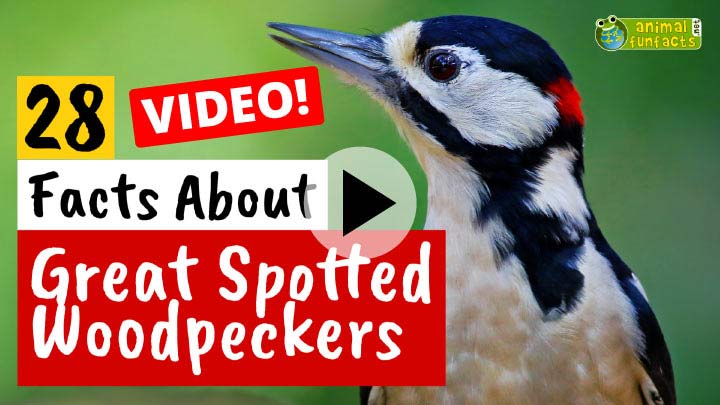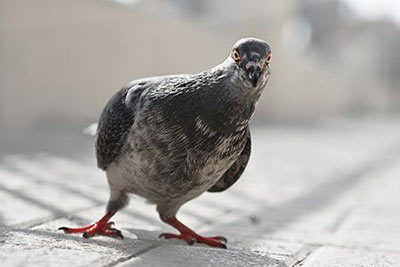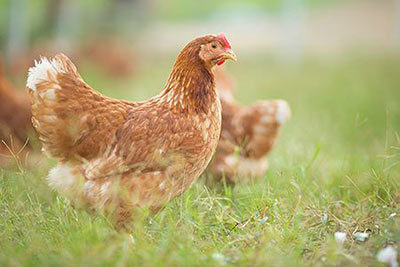Great Spotted Woodpecker
Great Spotted Woodpecker Facts
| Size | 9-10 in (23-26 cm) |
| Speed | Up to 15 mph (24 km/h) |
| Weight | 2-3 oz (60-90 g) |
| Lifespan | 6-11 years |
| Food | Insects, seeds, nuts |
| Predators | Birds of prey, hawks |
| Habitat | Europe, Asia |
| Order | Piciformes |
| Family | Woodpecker |
| Scientific name | Dendrocopos major |
| Characteristics | Uses its bill to noisily hammer holes into trees |
Main Characteristics
The great spotted woodpecker is a bird from the family of Picidae. Its most distinctive feature are the black, white and red plumage and the characteristic pecking into the woods.
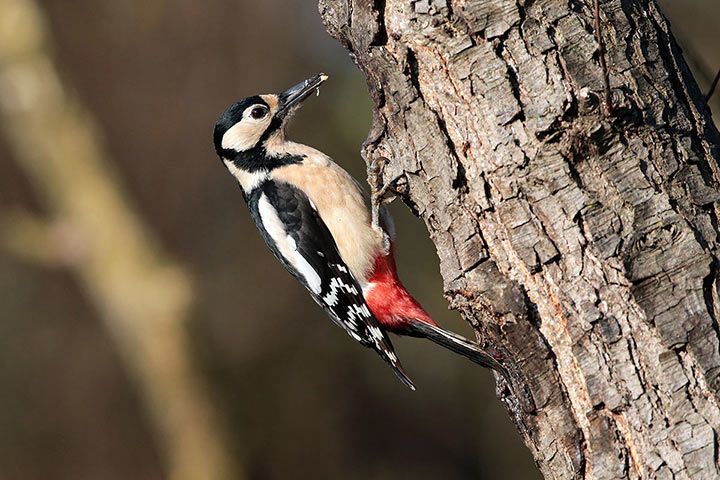
Species
Biologists don’t fully agree how many types of great spotted woodpeckers there are. The number hovers between 12 and 25 types. For example, there is the white-backed woodpecker, the stripe-breasted woodpecker, the crimson-breasted woodpecker and the Sunda pygmy woodpecker.
Distribution and Habitat
It lives in both deciduous and coniferous forests. But it prefers mixed oack and beech forests.

Behavior
Why Do They Hammer?
Great spotted woodpeckers hammer for one of four reasons:
- 1. They want to create a little cavity in the tree for nesting.
- 2. They're looking for insects, which are hiding under the bark of trees.
- 3. They want to attract female woodpeckers. This is also called “drumming”, because the males use their bills to very quickly perform about 10-15 blows on a trunk or branch.
- 4. They defend their territory.
Why Don't They Get Headaches?
The great spotted woodpecker is hammering all the time, but it does not need painkillers and does not suffer from brain concussion. A kind of suspension between its bill and skull protects the bird so that it can hammer all day long.
Anatomy and Appearance
Tongue
Great spotted woodpeckers have very long tongues. After having hacked little holes into the trees, they insert their tongue to catch the insects inside. They also use their tongues to slurp tasty nectar.
Feathers
Well protected against wood chips! As soon as the woodpecker starts drumming, the wood chippings fly everywhere. Little feathers cover its nostrils in order to prevent the chippings from getting stuck in its nose.
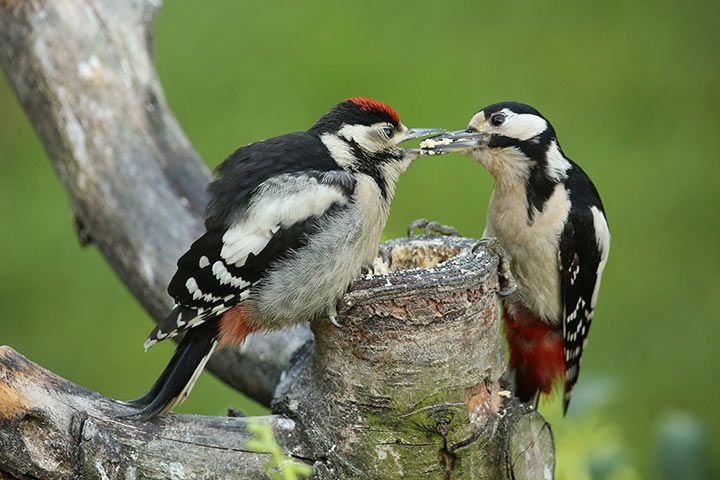
Senses and Abilities
Woodpecker Anvils
The great spotted woodpecker likes to eat nuts, and it has a special way of cracking them. While other birds hold nuts steady with their feet, the great spotted woodpecker sticks them into a crack or hole in a tree. This makes sure it doesn’t roll away, so it can comfortably peck at it until it reaches the tasty treat in the center. These holes or splits in trees are called “anvils”.
Flight Patterns
All woodpeckers use the same flight pattern: They flap their wings three times and glide along.
Reproduction
The great spotted woodpecker lays four to seven eggs which are incubated for 11-13 days. The little baby woodpeckers are fed by their parents for three to four weeks before they start their first attempts at flying.
The Woodpecker Cavity
The nest of the great spotted woodpecker is usually at a height of 6-30 feet (2-10 meters). It prefers old, rotten or even dead trees because their wood is softer. The entrance to the cave is only about two inches (5-6 cm).
The woodpecker loves its self-made home, but it usually does not like to stay there for longer than a year. It moves on to build cave after cave. The old ones can then be used by tits, starlings, and even owls (if the cave is big enough).
Fun Facts
Congratulations, Mr. Wodpecker!
In 1997, the woodpecker was Bird of the Year in Germany.
Video: 28 Facts About Great Spotted Woodpeckers
(Video opens on YouTube)
- Watch Now on animalfunfacts.net:
-
 All About Birds
All About Birds















